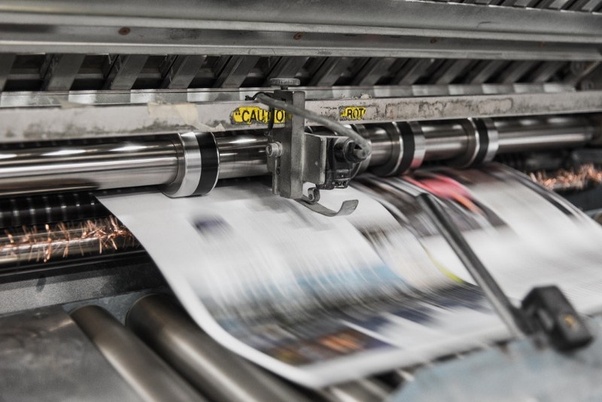How to Break into Non-Fiction Content Writing with Press Releases

If you are
· A rookie writer just starting your non-fiction writing career
· Someone who would like to make a career shift
· Currently a non-writer and would like to develop a writing business on the side without leaving your current job
… one of the easiest way to break into technical, business, or content writing is to write press releases.
According to the U.S. Small Business Administration, there are 27 million small businesses (with revenues up to $35.5 million in sales and less than 1,500 employees) in the United States alone.
Add to this the number of medium-size businesses in the United States and all the other small- and medium-size business in other English-speaking countries (plus, businesses in non-English speaking countries if you are multi-lingual), and you’d have a really large potential pool of multi-millions of businesses most of which publish press releases regularly to announce new products and services to the world.
Press releases (PR) are a regular part of doing business, the demand for which never goes away. It’s one of those “evergreen” writing assignments that you can always count on.
There are many templates in the market today for PR. Microsoft Word, for example, offers many such templates if you have MS Office installed on your computer.
However to be safe and to appeal to an as-wide-as possible customer base, I’d suggest you adopt the following generic and universal template to increase your chances of success.
1) Start the PR with the company logo on top center.
2) Follow that by the traditional “FOR IMMEDIATE RELEASE” announcement on upper-left.
3) On upper-right, include the following three important info fields:
3a) CONTACT: [Name of contact person].
3b) PHONE: [Contact phone].
3c) EMAIL: [Contact email]. Depending on the assignment, you can include web address or social media IDs & handles as well. Use your own judgement.
4) HEADLINE of the PR should follow, centered on the page. This should be catchy. Should express the core message of the PR right away, in as few words possible, and with as many keywords as possible, but with some flair and creative touch to stand out among thousands of other competing PR headlines. For example try something like “Mont Co. Ends Garbage Problem with XYZ Waste Disposal’s New System Solution” instead of “XYZ Trash Company Wins Mont Co. Municipality Garbage Contract”.
4a) Remember, no one cares how good something is for the PR company in question. Readers are only interest in the benefits that the product or service will enable them to enjoy (productivity, money, good health, better relationships, etc.). A PR is the wrong place for self-adulation.
4b) People want a solution to their problem (or an answer to what keeps them awake at night). Emphasize in PR how the company helps make life better and easier for the end-users, even when the end-user is another company (as in B2B sales).
5) SUBHEADER: the Header should be followed by a subheader or sub title. This is an ideal place to build up the PR owner by emphasizing anything exemplary and out of the ordinary with the company or person in question. This would build up the company or the person’s image and help the PR message be received even more warmly, in a much better and positive frame of mind.
For example: “XYZ has just been inducted into the Waste Management Hall of Fame”
6 ) CITY, STATE. DATE: You should start your press release with these three pieces of traditional information. Example: “Austin, Texas, Feb 3, 2019”
7) BODY of your PR should follow the CITY, STATE, DATE info.
8) FIRST PARAGRAPH is crucial. You should blurt out without any delay the 5-Ws of all good journalistic writing: Who, What, Where, When, and (if possible) Why.
For example “The XYZ Waste Management Company announced a new revolutionary way to protect the environment” is not good enough an opener since it omits the answer to the WHAT, WHEN and WHERE questions.
A better opener might be: “The XYZ Waste Management Company announced on Feb 3, 2019 at their Austin, TX headquarters their new award-winning all-digital waste management dashboard Clean4URWorld, a new revolutionary way to reduce the cost of waste management by 40% while protecting the environment.”
The SECOND and THIRD paragraphs could offer a QUOTE from a company spokesperson or a testimonial from a CUSTOMER who has actually user the product or the service.
Make sure your PR will fit into a single 8.5” x 11” paper when typed with a font like ARIAL Size 12. No PR should spill over to a second page since readers these days don’t have the time or patience to read “a novel,” so to speak. Make it short, to the point, and sweet.
9) ABOUT US. Finish your delivery with an ABOUT US section where you give all the relevant info about the company, including a short background history and all relevant ways to contact — including social media IDs and handles. But limit this to 3 sentences, max.
10) End your PR with three centered hash marks “# # #” — the traditional symbols that signal the end of a PR.
11) FOOTER — Right after “# # #” you can again include CONTACT INFO (“For more information about this Press Release please contact… at ….” etc.) since readers have a habit of automatically checking what’s at the bottom of a page before they go back and start to read the body text. So make sure you repeat the contact info at the bottom of your PR as well since receiving phone calls and communication is one of the main reasons why we are writing a PR.
Good luck!
RESOURCE
